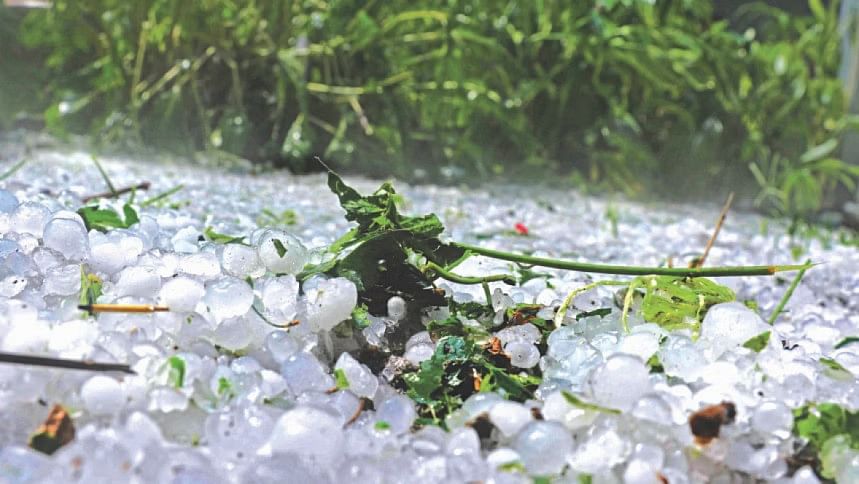Why do hailstorms occur?

The thunderstorms and sporadic rainfall during the last week few have been a welcome reprieve for most in the midst of heatwaves that keep coming back and going away. However, as some of these thunderstorms have come down as hailstorms, it has led to a new kind of weather extreme that is causing damage to houses, cars, crops, and other belongings.
But what is the science behind hailstorms? And why are they occurring now?
A hailstorm is when unevenly shaped balls of ice, called hails or hailstones, fall down during a thunderstorm.
Hails form inside a type of cloud called cumulonimbus. These are dense, towering vertical clouds that form when water vapour from lower altitudes is carried upwards by powerful air currents, causing them to condense into these clouds.
Inside these clouds, if thunderstorms create more powerful winds moving upwards, rain droplets start travelling with these winds into areas of higher altitude and low, subzero temperatures. There, these raindrops become solid ice. If they come into contact with more raindrops, these solid pieces of ice act as seed ice to create larger hailstones.
But these solid pieces of ice can hardly stay up in the clouds forever, and once the upward winds slow down, or the hails become too heavy to be held up by them, they start descending towards the earth at great speeds.
At surface level, if there are high velocity winds around, these hailstones can fall at angles or travel sideways, just like raindrops. Unlike raindrops, hailstones falling at an angle can cause serious damage.
How fast a hailstone travels depends on its size, the wind it has to battle to fall down to the ground, and the shape of the hailstone as air friction becomes an important factor. Larger hailstones tend to fall faster, while smaller ones fall at lower velocities because of wind turbulence.
One factor that may be affecting the prevalence of hailstorms during this season is the heatwave that preceded it. A heatwave forms when a high-pressure region of air settles high above the surface, and creates a bubble-like effect by trapping heat near the surface. This impedes convection, not allowing heat to move up, and that in turn stops clouds from forming at lower altitudes.
Eventually, as the heatwave begins to dissipate, clouds start forming at higher altitudes. And it is within these high altitude clouds that raindrops form and become hailstones.
As the possibility of hailstorms persists during this unpredictable season for weather patterns, it is important to be careful when going outside, especially during cloudy days. In the past, hailstorms as heavy as one kilogram have been recorded in Bangladesh. In fact, when such hailstones fell in Gopalganj in 1986, 92 people died as a result. We can only hope nothing similar happens this time around.

 For all latest news, follow The Daily Star's Google News channel.
For all latest news, follow The Daily Star's Google News channel. 



Comments